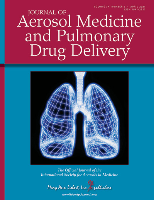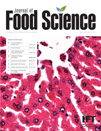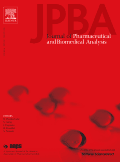
JOURNAL OF COSMETIC SCIENCE
Scope & Guideline
Advancing the Science Behind Beauty.
Introduction
Aims and Scopes
- Formulation Science:
Research focusing on the development and optimization of cosmetic formulations, including creams, gels, and emulsions, often utilizing advanced methodologies such as design of experiments. - Active Ingredients and Efficacy Studies:
Investigations into the effectiveness of various active ingredients in cosmetic products, including their mechanisms of action and clinical efficacy in treating skin conditions. - Safety and Regulatory Compliance:
Studies addressing the safety, stability, and regulatory aspects of cosmetic products, ensuring they meet the required standards for consumer use. - Innovative Delivery Systems:
Research on novel delivery systems for cosmetic ingredients, including nanotechnology, microemulsions, and other advanced formulations designed to enhance skin absorption and stability. - Natural and Sustainable Ingredients:
Exploration of natural and sustainable ingredients in cosmetic formulations, assessing their benefits, efficacy, and environmental impact. - Consumer Behavior and Perception Studies:
Research examining consumer perceptions of cosmetic products, including studies on sensory attributes, marketing influences, and the psychological effects of cosmetic use.
Trending and Emerging
- Biotechnology in Cosmetics:
An increasing number of studies are exploring the use of biotechnological advancements, such as peptides and biologically derived ingredients, to enhance the efficacy of cosmetic products. - Personalized Cosmetics:
There is a rising trend in research aimed at developing personalized cosmetic solutions tailored to individual skin types and conditions, reflecting a shift towards customization in the cosmetic industry. - Sustainability and Eco-Friendly Practices:
Research focusing on sustainable sourcing, biodegradable formulations, and the environmental impact of cosmetics is gaining traction, driven by consumer demand for eco-friendly products. - Nanotechnology and Advanced Delivery Systems:
Increasing interest in nanotechnology for enhancing the delivery and efficacy of active ingredients in cosmetics is becoming a prominent theme, with studies exploring various nanocarriers. - Skin Microbiome Research:
Emerging research on the skin microbiome and its impact on skin health is trending, highlighting the importance of maintaining a balanced microbiome for cosmetic efficacy. - Digital and Smart Cosmetic Technologies:
Innovations in digital technologies, such as mobile applications for skin analysis and augmented reality for virtual try-ons, are becoming more prevalent, reshaping consumer experiences.
Declining or Waning
- Traditional Chemical-Based Formulations:
There is a noticeable decrease in research centered on traditional chemical formulations, as the industry shifts towards more natural and sustainable alternatives. - Basic Cosmetic Chemistry:
Fewer studies are focusing solely on fundamental chemical properties of cosmetic ingredients, as the emphasis has moved towards practical applications and efficacy studies. - Historical Studies on Cosmetics:
Research exploring the historical aspects of cosmetics and their cultural significance is becoming less prevalent, possibly due to a growing interest in contemporary science and technology. - Consumer Safety Studies from a Historical Perspective:
While consumer safety remains important, the approach of looking back at historical safety standards and practices is fading, as the focus shifts to current regulations and real-time safety assessments.
Similar Journals

Journal of Aerosol Medicine and Pulmonary Drug Delivery
Empowering respiratory care with breakthrough findings.The Journal of Aerosol Medicine and Pulmonary Drug Delivery, published by MARY ANN LIEBERT, INC, is a distinguished journal dedicated to advancing the field of aerosol medicine and pharmacology. With an ISSN of 1941-2711 and E-ISSN 1941-2703, the journal has established itself as an essential resource for researchers and professionals specializing in pharmaceutical sciences and pulmonary medicine. Ranking in the Q2 category across multiple disciplines, including Pharmaceutical Science and Pulmonary and Respiratory Medicine, it holds notable Scopus rankings, with a percentile of 78th in Pulmonary and Respiratory Medicine. The journal offers open access options, ensuring that cutting-edge research is readily available to a global audience. With converged years from 2008 to 2024, the Journal of Aerosol Medicine and Pulmonary Drug Delivery continues to serve as a vital platform for disseminating innovative research findings, clinical practice insights, and technological advancements in drug delivery systems, thereby significantly impacting therapeutic strategies for respiratory diseases.

SKIN RESEARCH AND TECHNOLOGY
Innovative Insights into Skin Biology and Therapeutics.SKIN RESEARCH AND TECHNOLOGY, a distinguished publication by Wiley, stands at the forefront of dermatological science, emphasizing innovative research and technological advances in skin health. With an ISSN of 0909-752X and an E-ISSN of 1600-0846, this journal serves as a vital platform for researchers and professionals to present their findings and engage in discussions surrounding skin biology, clinical practices, and therapeutic technologies. As evidenced by its respectable Q2 ranking in the dermatology category for 2023 and a Q3 status in miscellaneous medicine, the journal attracts a broad readership and contributes significantly to the field. Housed in the United Kingdom with publications spanning from 1995 to 2024, SKIN RESEARCH AND TECHNOLOGY continues to foster innovation and knowledge dissemination in skin-related research. While its Access options are not open, the impact of the journal remains prominent, appealing to academic professionals and students eager to explore emerging trends and advancements in dermatological studies.

JOURNAL OF FOOD SCIENCE
Bridging Research and Application in Food ScienceJOURNAL OF FOOD SCIENCE, published by Wiley, is a premier journal dedicated to advancing the field of food science, bridging the gap between fundamental research and practical application. With an impressive impact factor reflecting its authoritative status, the journal is ranked in the Q1 quartile for Food Science in 2023 and boasts a Scopus ranking of #71 out of 389, placing it in the 81st percentile within Agricultural and Biological Sciences. First launched in 1936, the journal continues to serve as an essential platform for researchers, professionals, and students to disseminate innovative studies and reviews that address critical issues in food quality, safety, and technology. While not currently offering open access, its rigorous peer-review process ensures the dissemination of high-quality and impactful research. Researchers engaged in the vital disciplines of food science will find this journal indispensable for keeping abreast of cutting-edge developments in the field.

JOURNAL OF DRUG DELIVERY SCIENCE AND TECHNOLOGY
Pioneering Research in Drug Delivery TechnologiesThe Journal of Drug Delivery Science and Technology, published by Elsevier, stands at the forefront of pharmaceutical research, focusing on innovative drug delivery systems and technologies. With a robust impact factor reflected in its Q1 rating within the pharmaceutical sciences category, this journal is recognized for its high-quality contributions, ranking #30 out of 183 in the Scopus pharmacology and toxicology category (2023). Since its inception in 2004, the journal has been pivotal in disseminating groundbreaking research and advancements in drug formulation and delivery methodologies. Researchers and practitioners alike benefit from its comprehensive articles, which are accessible under open access options, ensuring widespread dissemination of knowledge. As it converges towards its 20th anniversary in 2024, the journal continues to enhance its impact on the scientific community, paving the way for future innovations in drug delivery.

Journal of Pharmaceutical and Biomedical Analysis
Pioneering research for groundbreaking pharmaceutical sciences.The Journal of Pharmaceutical and Biomedical Analysis, published by ELSEVIER and available in print and online formats, stands as a pivotal source of knowledge in the realms of Analytical Chemistry, Clinical Biochemistry, Drug Discovery, and Pharmaceutical Science. With an ISSN of 0731-7085 and an e-ISSN of 1873-264X, this journal is dedicated to publishing high-quality research that advances the understanding and development of analytical techniques in pharmaceuticals and biomedicine. The journal has earned a solid reputation, reflected in its Q2 category rankings across five distinct fields for 2023, and boasts impressive Scopus rankings, signaling its robust impact within the academic community. The Journal of Pharmaceutical and Biomedical Analysis serves as an essential resource for researchers, professionals, and students alike, providing actionable insights and fostering innovation that can directly influence future advancements in drug development and biomedical applications.

INTERNATIONAL JOURNAL OF DAIRY TECHNOLOGY
Championing research excellence in dairy science and technology.International Journal of Dairy Technology, published by Wiley, serves as a pivotal platform for advancing research and innovation within the field of dairy science and technology. Established in 1947, this esteemed journal has garnered a significant impact factor, reflecting its influential role in disseminating critical findings and fostering discourse among professionals, researchers, and students alike. With a distinguished ranking in Q2 across several categories including Bioengineering, Food Science, and Process Chemistry and Technology, it remains integral to the academic community, demonstrating high visibility and relevance. Researchers can access a wealth of open-access content, enhancing the sharing of knowledge within the discipline. The journal’s commitment to exploring emerging trends, innovative practices, and comprehensive analyses of dairy technology ensures that it remains at the forefront of advancements in this vital area of food science and engineering.

Journal of Chemical Metrology
Pioneering Research in Spectroscopy and ElectrochemistryJournal of Chemical Metrology is a vital resource in the evolving fields of Analytical Chemistry, Electrochemistry, Spectroscopy, and Toxicology, published by ACG PUBLICATIONS in Turkey. With a focus on advancing the understanding and application of chemical metrology, this journal aims to bridge gaps in quantitative analysis, offering researchers and professionals a platform to disseminate groundbreaking studies and methodologies. Although it operates under a traditional access model, readers can benefit from its insights as the journal continues to gain recognition with its 2023 rankings placing it in the Q3 and Q4 categories across various scientific disciplines. From its inception in 2019 to its projected convergence in 2024, the journal has been instrumental in fostering collaboration and innovation in chemical sciences, making it an essential tool for students and researchers dedicated to enhancing analytical techniques and ensuring safety through effective toxicological assessments.

Journal of Dermatology & Dermatologic Surgery-JDDS
Connecting Researchers to Pioneering Dermatologic DiscoveriesJournal of Dermatology & Dermatologic Surgery (JDDS) is a premier open access journal published by Wolters Kluwer Medknow Publications since 2018. This journal serves as a vital platform for the dissemination of cutting-edge research and advancements in the field of dermatology and dermatologic surgery. With its ISSN 2352-2410 and E-ISSN 2352-2429, JDDS strives to present high-quality articles that encompass clinical studies, innovative surgical techniques, and comprehensive reviews, thereby catering to the interests of researchers, medical professionals, and students alike. The journal has gained recognition within the academic community, evidenced by its Scopus ranks, placing it 237th out of 551 in the Medicine - Surgery category and 70th out of 142 in Medicine - Dermatology. The open access model not only enhances visibility but also encourages global collaboration and knowledge sharing in the rapidly evolving field of dermatology. Targeting the needs of diverse audiences, JDDS continues to foster an environment for scholarly communication and contributes significantly to the advancement of dermatologic sciences.

PHARMACEUTICAL RESEARCH
Exploring the frontiers of pharmaceutical research and application.PHARMACEUTICAL RESEARCH, published by SPRINGER/PLENUM PUBLISHERS, is a leading journal in the ever-evolving field of pharmaceutical sciences. With an ISSN of 0724-8741 and an E-ISSN of 1573-904X, this journal has established itself as a critical hub for disseminating innovative research from 1984 to 2024. The journal holds impressive rankings in prominent categories, including Q2 in Biotechnology and Q2 in Pharmaceutical Science, reflecting its robust impact on the global scientific community. The journal aims to provide researchers, professionals, and students with high-quality articles that contribute significantly to the advancement of drug development and medicinal applications. Although it does not currently offer Open Access options, its rigorous peer-review process ensures that only the highest caliber research is published, making it a valuable resource for those seeking to stay at the forefront of pharmaceutical innovation.

Journal of Pharmacy & Pharmacognosy Research
Empowering Research in Pharmaceutical SciencesJournal of Pharmacy & Pharmacognosy Research, published by JOURNAL PHARMACY & PHARMACOGNOSY RESEARCH-JPPRES, is a prominent open-access journal established in 2013, headquartered in Antofagasta, Chile. With a focus on the fields of Complementary and Alternative Medicine, Drug Discovery, Pharmaceutical Science, Pharmacology, and Pharmacy, this journal is recognized for its commitment to advancing research and disseminating knowledge within these important areas. With a current impact factor that reflects its academic rigor and relevance, the journal has achieved substantial recognition, evident by its Q2 and Q3 quartile rankings in multiple categories, indicating its growing influence on the scientific community. The Scopus rankings further highlight its standing in pharmacy and pharmacological disciplines, providing a valuable platform for researchers, professionals, and students to share their findings and insights. With its open access model, the journal ensures that high-quality research is available to a global audience, paving the way for collaborative advancements in pharmaceutical sciences.